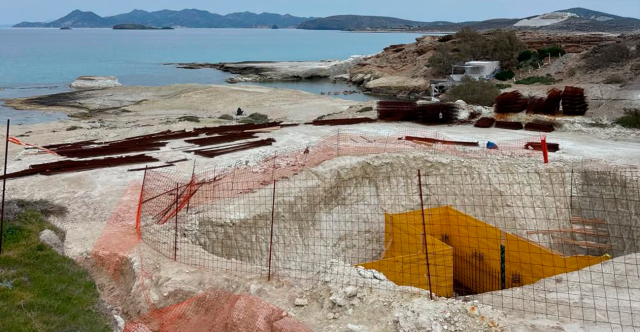Old Athens in the early years of the 19th century certainly had nothing to do with its looks today. It looked more like a large province than the capital of the newly formed Greek state. However, it was around 1835 that the first theater was built in Athens. It was indeed placed in a very central location, at Aiolou Street.
How was the first theater in Athens
The first theater for the entertainment of the public was located where the main building of the National Bank is today. Of course, it was not like a modern theater but it was the beginning of the next ones that would later be built in the capital. The theater was actually a makeshift wooden structure, with no roof. It also had a couple of galleries. At that time Aeolus, at this point was an abandoned dirt road away from the residential city. The families of Athens learned of the performances through the performances. They were announced in the market, but people did not seem to show much interest from the beginning. Not even when in 1836 Athanasios Skontzopoulos invested all his entire fortune by demolishing the old building. In its place, he built a larger theater, which again had no roof.
The exterior and interior of the theater
If you looked at the theater in Athens, you could see the "ticket shop" to the right of the entrance. The entrance was lit with two oil lanterns, which meant that you had to get very close to see it and enter. When you entered, the central gallery was for the royal family. This was the only thing that had a white cloth covering to hide the boards. The trellis boards were visible throughout the rest of the theater. The theater square was grounded and had fifteen rows of wooden seats. But the audience could also watch the show from behind the seats. There was plenty of space there, while the galleries were directly above.
To understand how early this construction of the theater was, one need only know the following: Many audience members turned on their own lanterns to watch the show. They were the same lights you used to see in the dark streets. And the stage, according to N. Laskaris - who is also the first to publish about the theater - was as primitive as it was in Shakespeare's time. Although there was a painted scene, no one could understand what it represented, so it was rather the imagination of the audience that had to shape the scenography according to the work. As for the actors' costumes, they were always dominoes, regardless of what play was being performed. The orchestra, which consisted of three musical instruments, was not in front of the stage but was crammed into a gallery.
The performances that were given
The first performance was given on May 24, 1836, with the play "The Olympia" by Metastasios, famous for the time, translated by Rigas Feraios, by a troupe of amateurs with only male actors. The Skontzopoulou Theater, as it was eventually called, was in operation for fifteen months, performing ten Greek plays that had never been performed before. In fact, the "Babylon" of Byzantium was performed here for the first time. In May 1836 Skontzopoulos went bankrupt and the theater was foreclosed. The stumbling block was taken down and the lenders took over the wood of the theater in exchange for their money.










